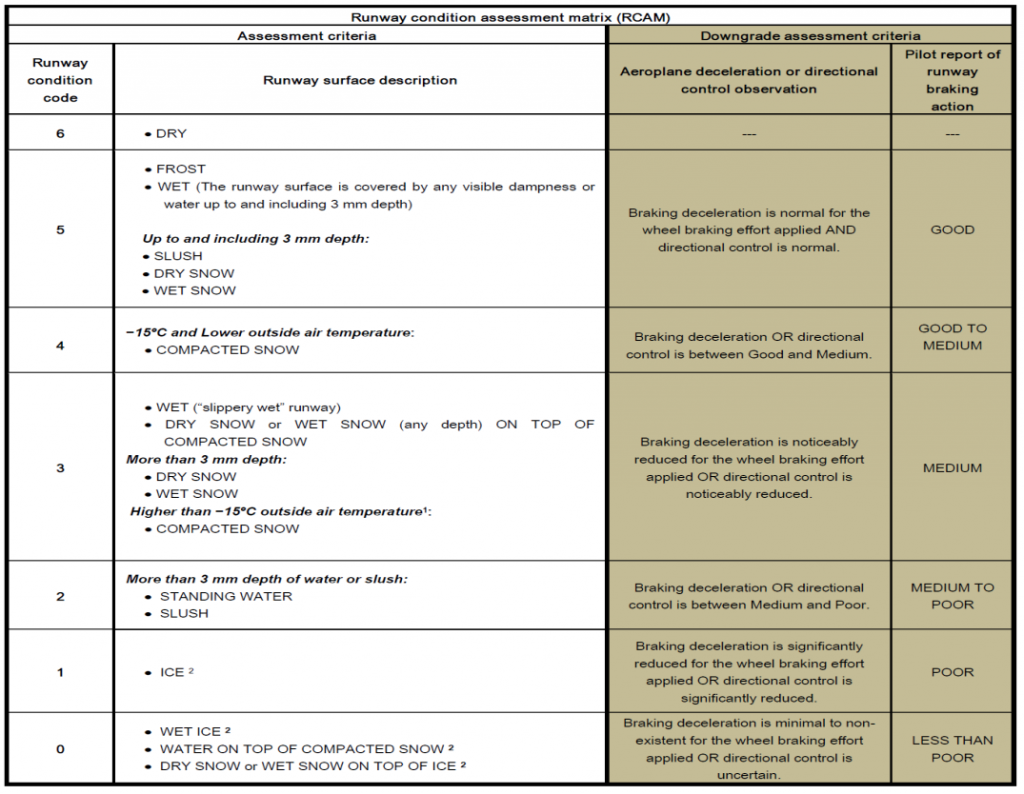
Accidents related to slipperiness (runway excursions) is one of the top safety risks of airports all around the world. A majority of runway excursions occur when the runway is contaminated by water, ice, or snow. The International Civil Aviation Organization (ICAO)’s study in 2006 to understand the underlying reasons for this problem resulted into interesting findings: different methodologies being used around the world for information sharing about runways, different communications methods, lack of harmonization in reporting, different training and even a lack of training!
In order to harmonize the information sharing method and thus mitigate the safety risks related to runways, in 2016, ICAO adopted a new assessment method and reporting format for runway surface conditions. This so-called “Global Reporting Format” (GRF) must be enforced for worldwide implementation from 4 November 2021.
What is GRF?
GRF is a standardized language reporting format for runways surface conditions around the globe where people in the air-traffic network understand what the numbers mean and how they can interpret them. The report is developed on the basis of a runway condition assessment matrix (RCAM). RCAM has a set of runway conditions and a number that is allocated to each condition. Depending on the weather conditions and contamination of runways, the runway condition code changes. This information is shared with the pilots; the pilots match this information with performance data of the aircraft and then decide whether it is safe to take off or land in or the distance needed to take off or land in, especially in adverse conditions.

Runway Condition Assessment Matrix (RCAM)

